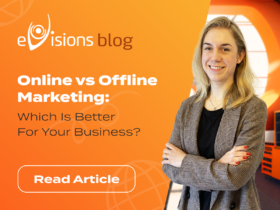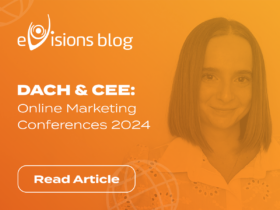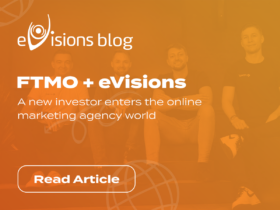Case study: How we turned mineral fertilisers into a exciting FB topic and increased organic YoY reach by 269%
13. 02. 2020 AutorThis case study will convince you that every industry is hot enough for social media. Building a lovebrand for a brand selling chocolates is an “easy job”. (Un)fortunately, people don’t love every product as much as they love chocolates. Don’t panic; this is where the real work of a marketer comes into play! Read how…
At the end of 2018, we launched our collaboration with client Yara Agri Czech Republic. The client entrusted us with the comprehensive management of the Facebook page, consisting of a regular presentation (content creation and sharing), community management, and paid campaigns (Facebook Ads).
Yara certainly does not produce chocolates. Yara provides plant nutrition solutions and helps farmers increase their yields and improve the quality of their production. In other words, it offers comprehensive services in crop nutrition and fertilisation.
Not exactly a sexy topic for social media, you say?
You are wrong. There is no anti-sexy theme, just a lousy marketer.
It’s one thing what product you’re selling. Knowing what you want to achieve is another. And three, how you do it…
Every industry is sexy enough to deserve to be on social media.
Anyone can love a chocolate bar. To win your favour, it doesn’t have to chat with you on social media. All it takes is one tasty bite and a photo in a lifestyle magazine revealing its delicious filling.
But it’s not the norm to get your marketing hands on a product that millions of people around the world love at first sight. And you’re not always the product’s target audience either.
Lovebrand building is quite easy in the case of chocolates. You and your candy bar will be together forever, for good and for bad… But today, we’re going to tell a different story. Every (social media) king should listen to his people first and foremost. And that even your brand is sexy enough for social, even if you don’t offer products popular with the general public.
The goals of collaboration
The long-term goal of cooperation with the client Yara Agri Czech Republic is mainly:
- Increasing brand awareness among the target group,
- Consolidating its position as a market leader in terms of quality and knowledge
- And in capitalising on customer insights.
In layman’s terms: when an agronomist, farm manager or farmer decides which plant nutrition product to use, he should choose the Yara brand because it seems somehow closer, more familiar and “smarter”.
(Original) content strategy
Let me be very brief. At the beginning of the collaboration, our vision was to focus on:
- Educating the target group on the issues,
- Sharing the latest industry news and trends in plant nutrition,
- News from the Yara environment.
One thing is what you want to share or tell people. How you do it is another. And most importantly, whether anyone cares at all.
If you’ve been involved in social media for a while, you’ll soon know what your client’s (your brand’s) target audience wants. And there are two ways to do that:
- They’ll ask (for) it.
- You have to go against the insights (get to the centre of the action).
Thus, we soon learned that if we continued to share educational posts about how and why fertilisers are excellent to use, we wouldn’t reap significant returns for the brand.
- “Fertilisers are destroying the environment.”
- “Fertilisers are making the planet overpopulated by humans.”
- “There’s nothing worse than rapeseed and chemicals in the field behind your house.”
The audience didn’t spare us. This is not quite how we imagined building a lovebrand. Where did we go wrong?
We’ll look at all six steps together, with hands-on demonstrations directly on our client.
Step 1: Admit you’re not a candy bar
We forgot to admit that we don’t sell candy bars that most people in the world love. Unless they’re on a diet. You’ll make a dent in the social world with a chocolate bar, but not so much with fertilisers.
Step 2: Put yourself in the shoes of your target audience and find the centre of their activities.
You’ll instantly empathise with the chocolate-loving person. The owner of a large farm or an agronomist? Not so easy…
Our social team loves strawberries and occasionally water the plants in the office (most are cacti). That’s how I would describe our farming activities. Well, we’re not exactly the target group.
But that’s not the point. It’s about knowing where to find your target audience (easily). The main thing you need at that point is to get to the heart of it, to find out why people might love your product. And to share that love with you on social media.
Step 3: Take advantage of FB groups
It’s early 2019, and Czech marketers are discovering the power of FB groups. Articles are being written that warn (scare) social specialists that no one is curious about pages sharing “product in its natural environment” anymore.
The future of Facebook is in groups.
However, Facebook groups have something going for them. Like if you’re not the target audience and you need to find out what they’re into, what they’re solving and what they’re talking about.
After all, it’s still true (with a bit of exaggeration) that people would rather put their thumb in the fire than give it to a brand’s FB page. But it doesn’t matter; most social media professionals understand that the metric of the number of page fans lost its deeper meaning around 2016.
Fortunately, the human need to hotly debate and be part of a particular community will always be there. And so, we looked around in the virtual environment where our target audience satisfies that need. In FB groups.
Step 4: Get insights from your target group
FB groups like Agriculture for Everyone, Agriculture CR and SK, Agriculture is My Life, and many more have become our kingdom. That’s where our people, or rather the people of the Yara brand, rule.
We have discovered that agronomists are great people, not “haters” as it seemed at first glance. They love to talk, take pictures, share, comment. Most of all, and most often, they focus on their lovely tractors. The Zetor is said to be the “bestest” choice.
You guessed right, that’s not a grammatical error. And Zetor is a tractor manufacturer.
Step 5: Build your communication on the insights of your target audience and become a friend with the same interest
Generally speaking, people are on Facebook primarily to:
– Communicate with friends, loved ones and people with similar interests,
– Share photos, thoughts and ideas that will get them praise, boost their ego or reinforce their status.
Be a friend with the same interest, not a brand selling a product.
How did we use our knowledge of our target audience, you ask?
The Yara brand is every agronomist’s smart sidekick, helping increase agricultural yields, and has a sense of humour.
It is as follows:
#1 Establishing a unified visual identity to promote brand awareness
Is there anything worse than a boring brand on FB? Yes. A boring brand with no identity. A brand whose posts get lost in the crowd of others. And which get mistaken even for photos shared in FB groups. Even though you are a friend with the same interest, you are not just any friend without a name and character.
#2 Thematic focus on the work of the agronomist (machinery, accessories, crops)
The target audience will talk to you if they have something to say on the topic. With FB groups, you’ll find out what issues are hotly debated – in a positive way.
#3 Practical tips for increasing yields and seasonality
Yara is not just any buddy with a clear identity. It’s an intelligent partner that helps farmers increase yields and improve production quality.
#4 Use UGC, i. e., focus group content sent in comments and messages
Don’t have photos of your product in its natural environment? Or even worse – the natural environment doesn’t look natural at all? The target group has them and would be delighted to share them.
#5 Demonstrating a sense of humour through the #besteststatements column
Want to take over Facebook? The “bestset” thing you can do is listen to your people. And don’t be a dry brand communicating your competitive advantages.
Step 6: Where organic reach can’t go, the paid promotion will assist
When we started promoting posts from the Facebook page, we used Lookalike audiences from people who had interacted with the FB page in the past 365 days. After a very short time, we found that we were reaching out to the “haters” in this way of targeting.
We started testing individual interests to identify prospective ones based on this observation. After proper testing, we have determined the interests that have worked well and continue to use them in our promotions.
Step 7: Measure and evaluate!
Marketing is all about testing and evaluating. What worked a year ago may not work today. Never rest on your laurels.
Lessons learned?
- Any product is sexy enough for social media.
- Don’t be afraid to admit a mistake and change your strategy (if it’s not working).
- Never underestimate your target audience. They’ll ask for what they want on their own. But you have to find their centre of gravity.
- Extract insights from relevant FB groups.
- Use insights from FB groups to communicate your brand.
- An essential part of a social media strategy is, of course, a paid promotion strategy.
- Measure and evaluate.










Komentáře